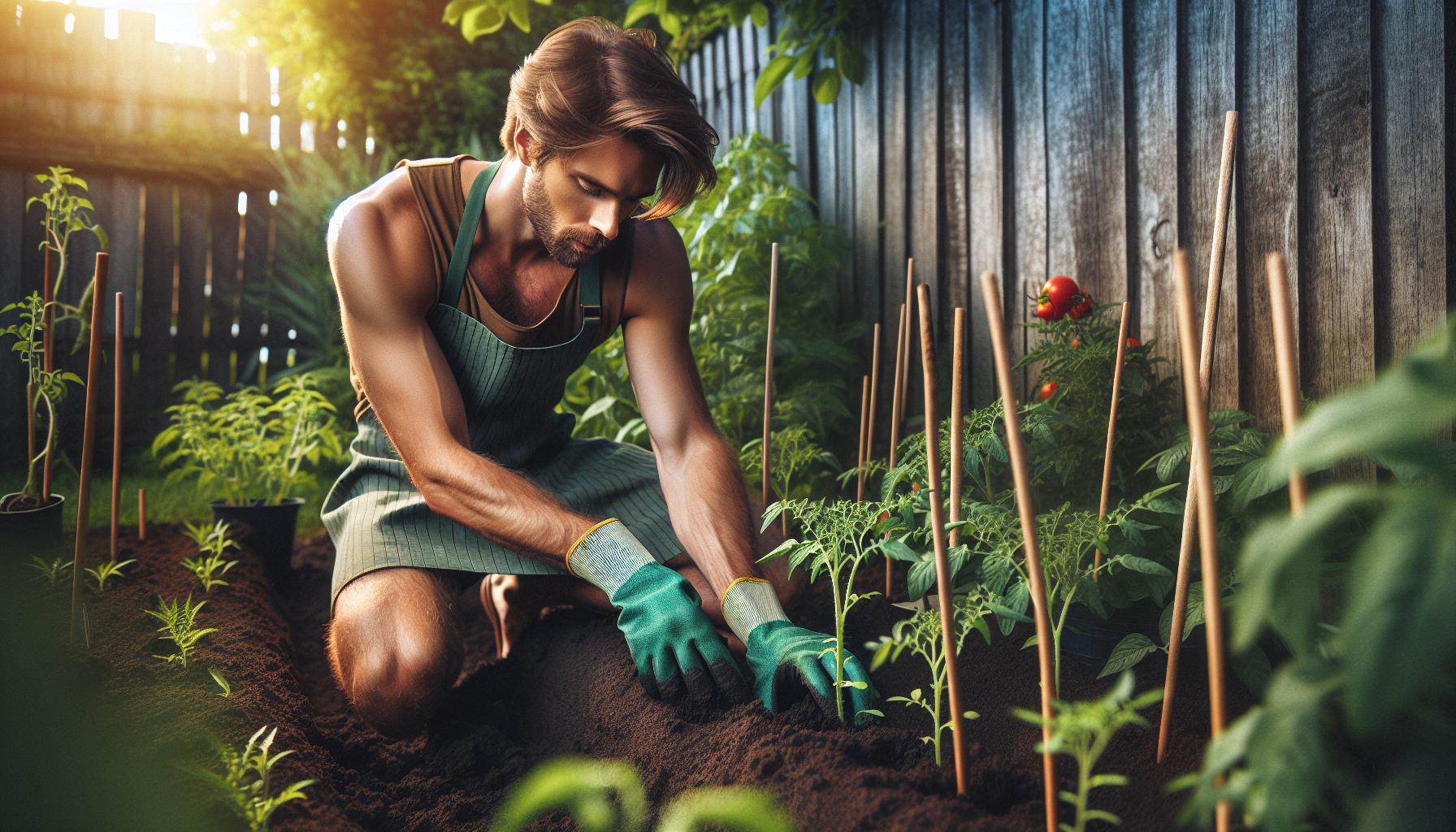Physical Address
304 North Cardinal St.
Dorchester Center, MA 02124

Imagine waking up to crisp fresh veggies straight from the backyard. It’s not a dream—it’s a thriving vegetable garden filled with homegrown goodness. Whether someone is a seasoned green thumb or just starting out, mastering vegetable gardening can transform meals and boost well-being.
With the right tips and a sprinkle of humor, cultivating a lush garden becomes less daunting and more enjoyable. From choosing the perfect seeds to tackling pesky pests, this guide offers practical advice that turns gardening into a delightful hobby. Readers will discover how simple steps can lead to bountiful harvests and a greener healthy lifestyle.
Effective planning sets the foundation for a successful vegetable garden. It ensures optimal growth and maximizes harvest potential.
Select a site that receives at least six hours of direct sunlight daily. Soil quality is crucial; opt for well-draining soil rich in organic matter. Avoid areas prone to waterlogging or strong winds, as they can stress plants. Proximity to a water source simplifies irrigation, ensuring consistent moisture levels. Additionally, consider space for pathways to access plants easily without compacting the soil. Assess the area’s climate and microclimates to choose suitable vegetable varieties. Fencing may be necessary to protect against pests and wildlife. Proper location choice enhances plant health and productivity, leading to a thriving garden.
Choose vegetables that thrive in your climate and soil conditions. Start with easy-to-grow options like tomatoes, lettuce, and carrots for beginners. Supplement with nutrient-rich crops such as spinach and kale to boost garden variety. Incorporate disease-resistant varieties to minimize the need for pesticides. Consider the growing season length; select fast-maturing plants for shorter seasons. Balance root vegetables with leafy greens to optimize space and resources. Use companion planting techniques, such as planting basil with tomatoes to deter pests. Prioritize vegetables based on your culinary preferences and nutritional needs, ensuring a rewarding and productive gardening experience.

Proper soil preparation ensures a healthy vegetable garden. It involves assessing soil quality and enhancing fertility to support plant growth.
Assessing soil quality determines suitability for vegetable cultivation. Collect samples from multiple garden areas to ensure accuracy. Use a soil test kit or send samples to a local extension service for analysis. Measure pH levels, ideally between 6.0 and 7.0, to optimize nutrient availability. Evaluate nutrient content, focusing on nitrogen, phosphorus, and potassium levels. Identify soil texture—sandy, loamy, or clay—to guide amendment choices. Address deficiencies based on test results. Implement regular soil testing annually to monitor changes and maintain optimal conditions.
Improving soil fertility promotes robust vegetable growth. Incorporate organic matter such as compost or well-rotted manure at a rate of 2-3 inches. Mulch with straw or grass clippings to retain moisture and add nutrients. Apply balanced fertilizers, ensuring a ratio of nitrogen, phosphorus, and potassium matches plant needs. Rotate crops annually to prevent nutrient depletion and reduce pest buildup. Integrate cover crops like clover or rye during off-seasons to fix nitrogen and enhance soil structure. Regularly monitor soil health and adjust practices to maintain high fertility levels.
Effective planting techniques ensure healthy growth and abundant yields. Choosing between seed starting and transplants, along with proper plant spacing, maximizes garden productivity.
Starting seeds indoors lets gardeners control germination conditions and extend the growing season. Seeds sowed six to eight weeks before the last frost date establish strong roots. Transplants provide a head start by offering established seedlings, reducing vulnerability to pests. When space is limited or immediate growth is desired, transplants prove advantageous. Both methods require well-prepared soil and consistent watering. For example, tomatoes thrive whether started from seeds or transplanted seedlings. Selecting the right approach depends on the vegetable type and local climate conditions. Additionally, transplants can shorten the time to harvest, ensuring quicker access to fresh produce.
Maintaining proper plant spacing promotes air circulation and minimizes disease risk. Each vegetable demands specific spacing; lettuce requires six inches between plants, while squash needs three feet. Overcrowding stunts growth and limits nutrient access. Implementing row spacing ensures adequate sunlight exposure and ease of maintenance. Companion planting optimizes space usage, such as planting basil alongside tomatoes to deter pests. Measuring and planning spacing during planting achieves organized and productive garden beds. Additionally, proper spacing facilitates efficient watering and harvesting, contributing to overall garden health and productivity.
Proper watering ensures healthy vegetable growth and maximizes yields. Implementing efficient irrigation systems conserves water and supports plant development.
Consistent watering schedules promote steady growth. Early morning watering minimizes evaporation and reduces disease risk. Drip irrigation delivers water directly to roots, enhancing efficiency and targeting each plant precisely. Mulching retains soil moisture and maintains even temperature levels. Monitoring soil moisture prevents overwatering and underwatering, ensuring optimal conditions. Adjusting watering frequency based on weather and plant needs maintains balance. Collecting rainwater with barrels can supply natural hydration, lowering water costs. Incorporating moisture sensors automates irrigation, providing real-time data for precise management. Selecting the right watering techniques supports robust vegetable health and sustainable gardening practices.
Implementing effective pest and disease management strategies ensures a healthy vegetable garden. Utilizing organic methods promotes sustainability and protects beneficial insects.
Employ natural pest control techniques to minimize chemical use and maintain garden balance. Introduce beneficial insects like ladybugs and praying mantises to reduce pest populations. Apply neem oil or insecticidal soap to manage infestations without harming plants. Rotate crops annually to disrupt pest life cycles and prevent buildup. Use companion planting, such as marigolds with tomatoes, to deter common pests. Conduct regular garden inspections to identify issues early, allowing for prompt, targeted actions. Mulch gardens to reduce weed growth and provide habitat for beneficial organisms. Attract birds and beneficial insects by incorporating native plants. Implementing these organic strategies fosters a thriving, resilient garden ecosystem.
Starting a vegetable garden opens up a world of fresh produce and personal satisfaction It’s a rewarding journey that blends patience and care with the joy of watching plants thrive With the right planning soil preparation and maintenance anyone can cultivate a vibrant garden
Embracing these tips makes gardening approachable and enjoyable Whether they’re seasoned gardeners or just beginning each step brings them closer to a healthier and more sustainable lifestyle The seeds planted today will grow into not just vegetables but a lasting connection with nature